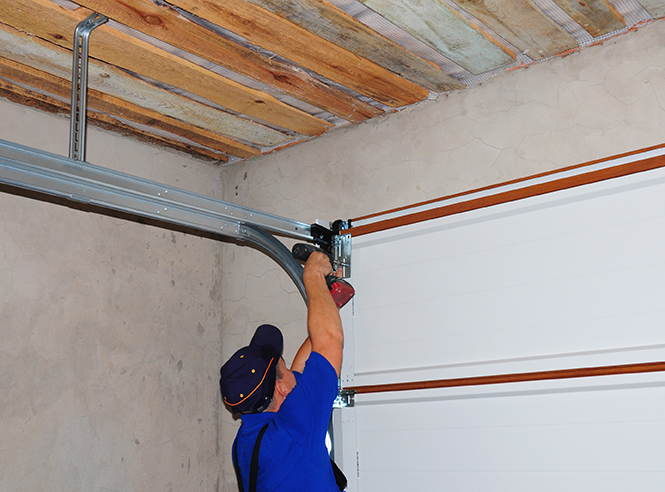Usual Garage Door Problems and How to Repair Them
Garage doors are crucial for both protection and comfort, yet they commonly provide a variety of usual concerns that can frustrate homeowners. While some concerns might appear uncomplicated to solve, others may require an extra nuanced understanding of garage door auto mechanics.
Noisy Garage Door Operation
A loud garage door operation can be a substantial resource of inconvenience for homeowners, usually suggesting underlying mechanical issues. Such disturbances may stem from different causes, consisting of worn-out rollers, loosened hardware, or not enough lubrication. Identifying the resource of the noise is crucial for reliable resolution.
Over time, these elements can wear away, leading to grinding or squeaking noises as the door steps. In addition, loose bolts or screws in the door system can develop rattling sounds during operation.
An additional contributing element is poor lubrication of the door's moving parts. Applying a high-quality lube to the tracks, springs, and rollers can substantially diminish friction and sound. Home owners should perform this maintenance occasionally to keep optimal performance.
Lastly, the garage door opener may likewise produce noise because of its age or mechanical problems. If the sound continues in spite of resolving various other variables, consulting a professional for a complete assessment and possible repair service might be needed.
Door Won't Open or Shut
Experiencing a garage door that will not open up or shut can be incredibly frustrating and usually signals a breakdown within the system. Several factors can add to this issue, and recognizing the origin is necessary for efficient resolution.

Following, evaluate the security sensing units located at the base of the door. These sensors can become misaligned or blocked by debris, preventing the door from operating appropriately. Clean the sensors with a soft towel and ensure they are lined up.
In addition, the garage door's inner components must be evaluated. Problems such as a damaged springtime, worn-out rollers, or a damaged opener can hamper activity. If any parts show up to be damaged, it might be advisable to seek advice from a professional for fixings.
Misaligned Tracks
(Always Available)Misaligned tracks can severely disrupt the smooth operation of a garage door, causing operational failings such as irregular movement or total immobilization. This issue generally emerges due to a selection of variables, consisting of deterioration, unintentional impacts, or inappropriate installment. When the tracks are misaligned, the rollers can stagnate freely, which not only stresses the electric motor but additionally presents security risks.
To identify imbalance, aesthetically evaluate the tracks for voids or unequal spacing. If you notice any kind of inconsistencies, it is critical to address the concern immediately - garage door service. Begin by loosening up the screws that protect the track to the wall, enabling modifications. Carefully touch the track back into its proper setting using a rubber club or a similar tool, guaranteeing it is straight and level.
When the placement is fixed, retighten the screws to safeguard the track. For a more long-term remedy, think about enhancing the tracks with additional brackets. Normal maintenance, including cleansing the tracks and guaranteeing rollers remain in good condition, can protect against future misalignments. By resolving misaligned tracks quickly, you can recover the functionality of your garage door and improve its long life.
Broken Springs
Among the different components of a garage door system, broken springs are among one of the most typical concerns that can dramatically hinder its capability. Garage door springs Affordable Excellence are important for balancing the weight of the door, enabling smooth opening and closing. When a springtime breaks, it can result in a door that is tough to run or, in some instances, completely unusable.
There are 2 major sorts of springs: torsion springs, which are mounted above the door, and extension springtimes, found on either side. Indicators of a broken springtime consist of a door that won't open up, a visible space in the springtime, or a loud noise during operation. Trying to run a garage door with a damaged spring can cause further damages to the door or the opener.
Fixing damaged springs is not a DIY task; it calls for specialized devices and knowledge due to the high stress entailed. It is a good idea to seek advice from an expert technician who can securely change the springs and ensure the door is properly stabilized. Routine maintenance and evaluations can help prevent springtime failings and prolong the lifespan of the garage door system.
Push-button Control Issues

If the remote still falls short to run, check the garage door opener to make sure that its sensing units are tidy and unblocked. Dirt, particles, or misalignment might hinder the signal transmission between the remote and the opener.
Interference from other digital gadgets can additionally hinder remote performance. Ensure that neighboring gadgets, such as wireless routers or cordless phones, are not creating disturbances. garage door service. If interference is believed, attempt moving these devices even more far from the garage door opener
In some cases, the remote might require to be reprogrammed. Consult the producer's guidelines to reset the push-button control and synchronize it with the garage door opener. If all else falls short and the remote remains to malfunction, take into consideration speaking with a professional specialist for a comprehensive examination and possible substitute of the remote or opener.
Final Thought
(Prompt Service)In summary, typical garage door problems can considerably influence capability and safety and security. Addressing loud operation entails lubrication and tightening up equipment, while concerns with opening or closing need inspection of power resources and sensing units. Misaligned tracks can be corrected through adjustment, although busted springs necessitate professional treatment. Remote malfunctions normally occur from weak batteries or interference, which can be fixed with substitute or reprogramming. Positive maintenance and prompt repair services can ensure optimum efficiency and longevity of garage doors.